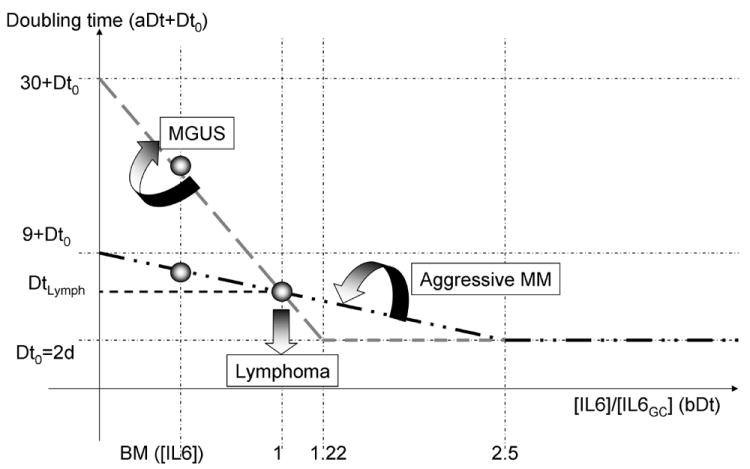Figure 5.

Dynamics of the interface between lymphoma and multiple myeloma. The figure above describes how the doubling time of a centrocyte with an aberrant translocation changes in response to the inflammatory cytokine IL-6, whose concentration in the light region of the germinal center is used as reference. Different combinations of the two parameters (aDt, doubling time in absence of IL-6, and bDt, minimum doubling time in presence of IL-6) create different curves; those with a doubling time lower than DtLymph for the germinal center IL-6 concentration will give rise to lymphomas. From this pivotal point (1, DtLymph) rotations clockwise will give rise to indolent forms of multiple myeloma, while rotations counter-clockwise will give rise to de novo multiple myeloma (see doubling time at lower IL-6 concentrations, in the bone marrow).
